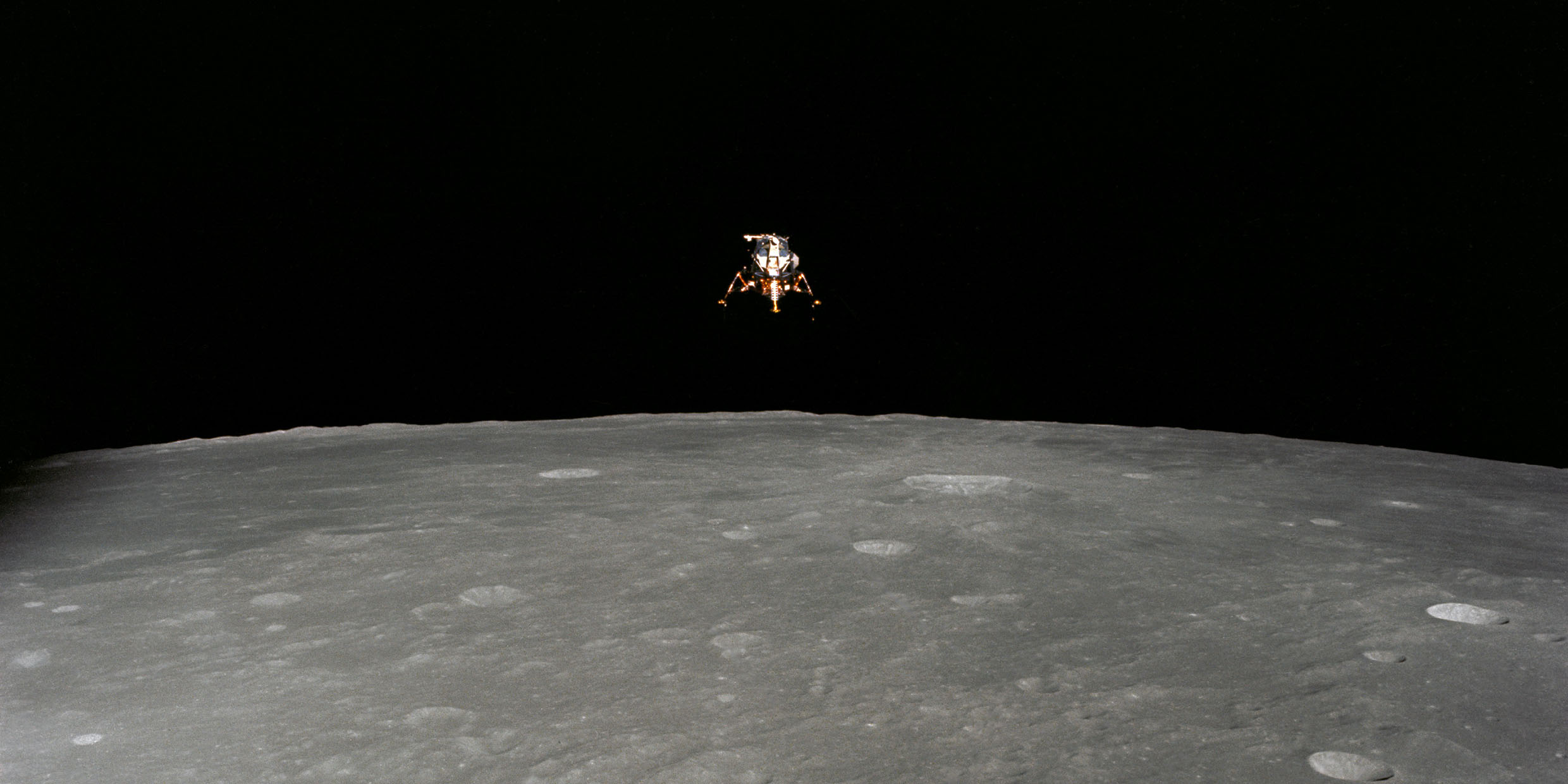Originally published 22 November 1999
Seldom has a scientific and technological story been turned into higher art than Michael Light’s Full Moon, a volume of photographs from the Apollo missions to the Moon.
Light spent four years in the NASA photo archive in Houston, sorting through more that 32,000 still images from the 11 successful manned Apollo missions, six of which landed men on the Moon to explore the surface. About half of the archived photographs were made by the astronauts with hand-held cameras.
He has woven 129 razor-sharp images into a stunning documentary of the lunar explorations. The photographs are presented without captions. What little text there is, with concise information on the individual photographs, is held to the back of the book.
Today, 27 years after the last Moon landing, the Apollo missions have something of the quality of myth, as if they were a heroic story dreamed up by our ancestors. But, of course, they happened. We watched them happen. We sat awestruck in front of our television sets as Neil Armstrong stepped onto the lunar dust. Still, Michael Light’s gorgeous book evokes a mythic adventure, a modern Iliad or Odyssey.
Perhaps the most striking thing about the book is color. And the absence of color.
The first photographs show the orange flames of blast off. As the moon-bound spacecraft leaves Earth orbit, we have views of our multi-hued planet, with blue horizon arching against the blackness of space. Another image shows the first glimmer of dawn seen from the nightside of Earth, refracted into slivers of blue, yellow, and orange by the atmosphere: an eyelash rainbow between two darknesses.
Then we see the Moon. Looming out of blackness. Colorless. A Death Star. A world of gray.
A majority of the book’s photographs were made from lunar orbit or on the Moon’s surface. Many of these were made with color film, but you’d hardly know it. Only the occasional presence of human artifacts reminds us of the world of color: gold foil wrap on the lander and rover; the red, white, and blue of an American flag; an orange cable strung out across the colorless lunar soil; the bright clothing of Charles Duke and his family in a Polaroid snapshot left by the astronaut on the dust of the Moon’s Descartes Highlands.
One intriguing photograph shows astronaut Alan Bean deploying experiments on the lunar surface, his body surrounded by an ethereal blue aura. Is this true lunar color? Probably not. The mysterious blue glow is thought to have been caused by water vapor ice crystals emitted from the heater on Bean’s space suit back pack. If so, the blue aura is as much an earthly import as the gold foil or red, white, and blue American flags.
Only a single photograph shows color that is properly the Moon’s.
Harrison Schmitt stands next to the lunar rover at the edge of a crater called Shorty. To his right and left are two patches of bright orange soil. Schmitt, a geologist, thought the coloration might be due to volcanic gases escaping through cracks in the lunar crust in relatively recent lunar geologic history. But when samples of the unusual soil were analyzed on Earth they proved to be nearly 4 billion years old, or almost as old as the Moon itself. They consist of tiny glass beads colored by titanium, spewed forth from the hot lunar interior by “fire fountains” early in the Moon’s history.
In her collection of essays on photography, critic Janet Malcolm writes of the difference between black-and-white and color photography: “It is black-and-white photography that demands of the photographer close attention to the world of color, while color photography permits him to forget it.” The serious photographer, she says, resists “the blandishments of color.”
There are no blandishments of color on the Moon, only multi-tonal grays. Michael Light tells us that photographs made on black-and-white film are his favorite images of the lunar surface, because the finer grain of black-and-white film captures the crispness of vision in a world without air. “Truthfully,” he says, “humans were never meant to see so clearly and penetratingly, without an atmosphere to soften the edges of the physical world and protect them from the more overwhelming aspects of the Sun’s illuminating force.”
Only when the astronauts blasted off the lunar surface and headed for home did their eyes begin to see again the way nature has prepared us to see. A photograph taken just before atmospheric reentry shows a gorgeous crescent Earth, blurred and softened by atmosphere — twilight over Africa. Blue water, white clouds, and continental shades of orange, green and brown: the rainbow signature of a planet gauzed with the supple elements of life.
The returning astronauts must have felt like Dorothy landing in technicolored Oz after leaving black-and-white Kansas. Surely, they now paid closer attention to the world of color than they ever had before.



